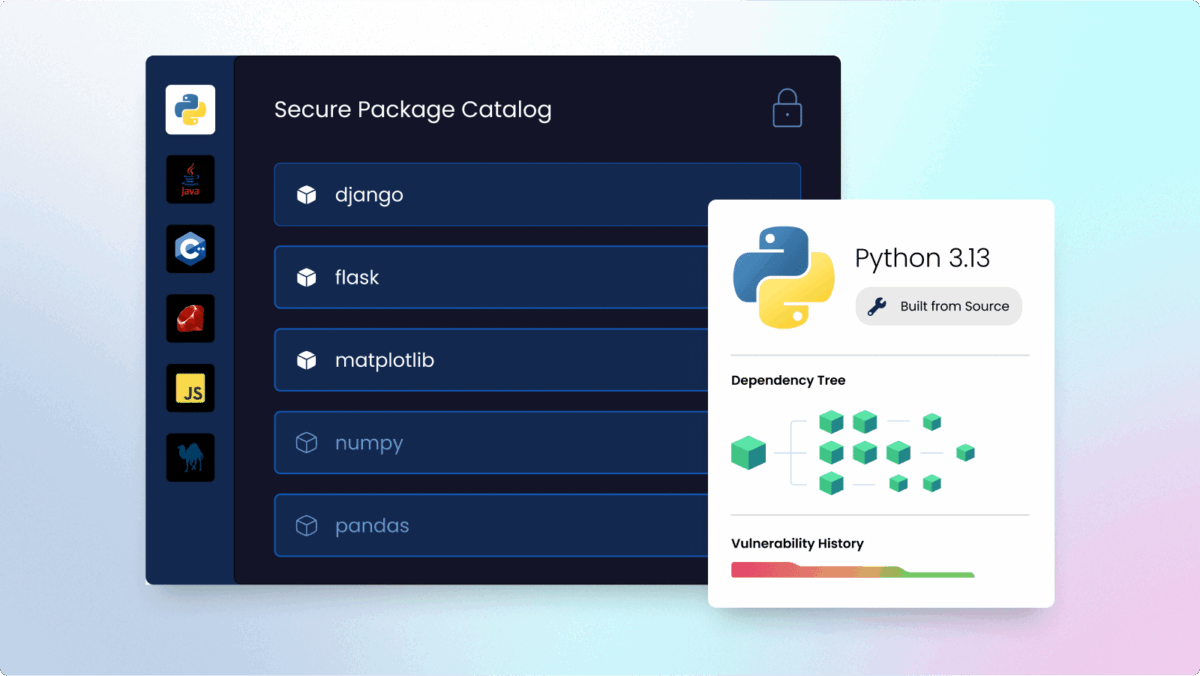Secure & customized containers, built to your specifications
Skip the headaches and risks that come with layering dependencies into your containers.
Let ActiveState build a secure, custom container image tailored to your application needs. We’ll ensure that every layer from OS to app dependency is fully remediated and passes your security requirements.
- A Secure, Customized Container Image: You’ll receive a container-image rebuilt from the OS up using ActiveState’s secure build process and industry-leading catalog of over 40 million secure components.
- Rapid Delivery: No long wait times, just a fast, clean build.
- Low-to-No Vulnerabilities: Get a fully remediated container that you can evaluate with confidence.
- Seamless CI/CD Integration: Delivered via secure private registry, ready to plug into your test environment.


- Secure, Customized Container Image: You’ll receive an image rebuilt from the OS up using ActiveState’s secure process and 40 million vetted components.
- Rapid Delivery: No long wait times, just a fast, clean build.
- Low-to-No Vulnerabilities: Get a fully remediated container that you can evaluate with confidence.
- Seamless CI/CD Integration: Delivered via secure private registry, ready to plug into your test environment.
ActiveState is so seamless that the business can function even with turnover and little training. The lights stay on and the engineers don't have to worry about what languages they are using to add value.

ActiveState is in a good position. You're already well down the SLSA route and I think that's extremely important as more and more of the SSDF will come into the attestation.

I don't have to think too much about security and the complications anymore because ActiveState does it for me.

In a place where you don't have this infrastructure set up, [ActiveState] is turnkey and a no brainer. Other build environments are garbage next to yours!

What to Expect

Meet the Team
Together with your team, we’ll learn more about your needs and review the requirements of your container.
We'll Handle the Build
From there, the ActiveState team will do the heavy lifting; we’ll build your container based off of your specifications.
Deploy to Production
All that’s left for you to do is to pull your container, watch your CVE count drop, and get it ready for deployment